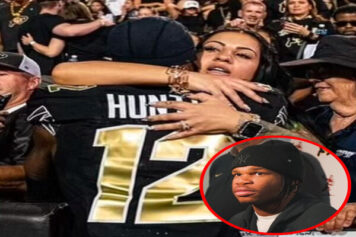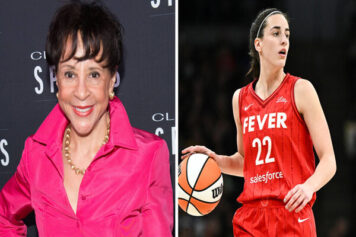Until I saw Fast & Furious 6 on Saturday after it premiered two weeks ago, I had lost perspective on how long the overachieving Fast and the Furious franchise’s wheels had been spinning around the block. For a film franchise that was built upon the fleeting guilty pleasure of exhilarating street race sequences, it’s had some impressive staying power.
Besides the Harry Potter series, which was based on a best-selling children’s book, I can’t remember a tent pole film series, which has kept its ensemble cast intact and remained box office gold over a 12-year span. When The Fast and the Furious premiered back in the summer of 2001, J.K. Rowling’s future Hogwarts crew was still taking the yellow bus to public school. Yeah, Diesel and Tyrese’s domes have been bald longer than Bruce Willis’, but, in 2013, Paul Walker looks less like a lax “surfer dude” and more like 2001 Paul Walker’s dad.
Willis has been headlining the Die Hard franchise for a quarter-century, but John McLane had a new sidekick in every film. Lethal Weapon never had a linear storyline and while Chris Tucker and Jackie Chan were connected at the hip for the entirety of the Rush Hour trilogy, that series became too campy by 2007.
Witnessing the progression of Diesel’s Dominic Toretto and Walker’s Brian O’Conner’s 12-year story arc from adversaries on opposing sides of the law to fugitives on the lamb together has been a unique experience. The cast gets all the love, but The Fast and Furious has become a blockbuster franchise (that’s grossed nearly $2 billion worldwide) thanks to Justin Lin’s vision.
After 2 Fast 2 Furious threw L.A. out with the bathwater, replaced it with Miami’s scenery and exchanged Diesel for Tyrese and Ludacris. It appeared Walker was on track to become the Fast and Furious’ mini-John McClane. However, the Lin changed the course of the franchise’s history.
Beginning with the fourth installment, Fast & Furious, Lin reunited Toretto, O’Conner and Toretto’s sister/O’Conner’s love interest. The fifth connected the individual storylines and introduced Hollywood’s reigning action champ Dwayne Johnson, but Fast Six sets the third act in motion. It’s not an ending, but a new beginning.
Right off the bat, Fast Six throws the passage of time in your face. The opening sequence begins with O’Conner rushing to witness the birth of his first child and Toretto reminding him that once he walks through those doors, his life changes. It’s a metaphor for what's to come. What follows is a montage of flashback scenes that round up what’s unfolded in the first five films.
Toretto, O’Conner and the gang outgrew street racing and became Ocean’s 11 on wheels in Fast Five. The promotion of Fast Six revolves around Fast Five’s post-credits scene revealing that Toretto’s long-time girlfriend, Letty (Michelle Rodriguez) seemingly faked her death in the fourth installment and is part of a European terrorist group’s global threat. You may need Map Quest to navigate that storytelling labyrinth, but it is what is. The spectacle is turned up a notch in Fast Six, but the scope is larger and so are the stakes.
There’s action, and special effects galore, but the script also relies on the relationships forged over a decade-plus to create suspense. It also feels like a series finale 12 years in the making. Old villains become central to the plot, and no one is safe.
Fast Six is the culmination of what Lin had in mind when he took the reins of the franchise after 2 Fast 2 Furious and began crafting a linear story arc that will conclude in next summer’s Fast 7 (even though he’ll no longer be returning as director).
The most impressive accomplishment of Fast Six was making Lin’s blockbuster debut, Tokyo Drift, relevant in the grand scheme. “Family” has been the mantra of Toretto’s and his gang since the original film, but 2004’s Tokyo Drift is the prom baby conceived accidentally and left on the steps of a Catholic church.
Most complaints at the time concerned Lin replacing Diesel with Bow Wow, while the starting quarterback from Varsity Blues (Walker) was replaced with the backup quarterback from Friday Night Lights (Lucas Black) and the illegal street racing angle was replaced with teenage boarding school shenanigans. Tokyo Drift was the low-point and the reset button on the franchise.
Ultimately, Lin got creative by retroactively making Tokyo Drift a prequel and brings it roaring back with vengeance in Fast Six by incorporating significant events from the film into the timeline as a catalyst.
Beyond the economics and critical reception, the series is also a fast and furious leap forward for multicultural Hollywood casts. It’s rare to see a successful blockbuster whose protagonists and antagonists are portrayed by Black, Latino and Asian faces. Part of its success can be attributed to the fact that the films don’t cater to a specific demographic. It’s a racially ambiguous, all-inclusive franchise for the 21st century that doesn’t use its diversity as a plot fulcrum or comedic gimmick (see: Chris Tucker butchering Cantonese). To top it off, Lin is one of the few Asians handed the reins of a major big-budget franchise.
Just like its title suggests, The Fast and the Furious series doesn’t slow down with its latest installment. It can’t be stopped, won’t be stopped. Until Diesel or Walker grow a caterpiller mustache whilst channeling their inner-Danny Glover and get too old for this ish, it shouldn't.



